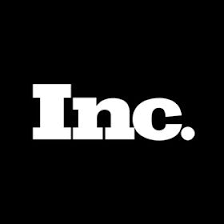
Informed i’s Weekly Business Insights
Extractive summaries and key takeaways from the articles carefully curated from TOP TEN BUSINESS MAGAZINES to promote informed business decision-making | Since 2017 | Week 392 | March 14-20, 2025 | Archive

Jeff Bezos: If You Want to Achieve an Impossible-Sounding Goal, Focus on the Inputs, Not the Output
By Jeff Haden | Inc Magazine | March 19, 2025
Extractive Summary of the Article | Listen
3 key takeaways from the article
- You probably know what you want to do. (It’s easy to think of things you want to do.). How you’ll get there is the problem, especially if the goal doesn’t seem directly — much less easily — controllable. Like “building a reputation for excellence.” Or “becoming the employer of choice.” It’s a common problem.
- According to Jeff Bezos if you focus on the controllable inputs to your business, in the long term, you get better results. Manage controllable inputs, and the output almost always takes care of itself, especially over the long term. Success typically results not from a relentless focus on an end goal, but on the daily process required to achieve that goal.
- Set goals that allow you to work backwards to find the controllable inputs that allow you to achieve them. Follow that chain all along the way until you find concrete steps you can take, and then focus on improving those controllable inputs. Do that, and the output will almost always take care of itself.
(Copyright lies with the publisher)
Topics: Strategy, Startup, Entrepreneurship, Growth
Click for the extractive summary of the articleYou probably know what you want to do. (It’s easy to think of things you want to do.). How you’ll get there is the problem, especially if the goal doesn’t seem directly — much less easily — controllable. Like “building a reputation for excellence.” Or “becoming the employer of choice.” It’s a common problem.
According to Jeff Bezos (said in 2014), you can flip it around (long, but worth it): If you focus on the controllable inputs to your business, in the long term, you get better results. Say somebody came up to me and said, “Jeff, I want your job to be to drive up the Amazon stock price, and just manage that directly.” Many companies actually try to do this. They go out and try to “sell” the stock. That’s a silly approach, that’s not sustainable. It’s much better to say, “What are the inputs to a higher stock price?” OK, well, free cash flow and return on invested capital are inputs to a higher stock price. Let’s keep working backwards. What are the inputs to free cash flow? And you keep working backwards until you get to something that’s controllable. A controllable input for free cash flow would be something like lower cost structure. Then you back up from there and say, if we can improve our picking efficiency in our fulfillment centers and reduce defects — reducing defects at the root is one of the best ways to lower cost structure — that starts to be a job you would accept. If you’re a reasonable person, you would say, “I have no idea how to drive up the stock price. I can’t manage that directly. It’s not a controllable input.” But I can make picking algorithms more efficient, and that will reduce cost structure. And then you follow that chain all along the way.
The same holds true for your business. Want to increase sales? Focus on controllable inputs: the number of leads generated, the number of cold calls made, the type and frequency of follow-ups. Turn the goal into a series of controllable, manageable inputs. (“Manageable” not in terms of easily attainable, but a task or process that can be actively and objectively managed.)
Want to get new employees up to speed faster and better? Focus on controllable inputs. The same is true for personal pursuits.
Manage controllable inputs, and the output almost always takes care of itself, especially over the long term. Success typically results not from a relentless focus on an end goal, but on the daily process required to achieve that goal.
Set goals that allow you to work backwards to find the controllable inputs that allow you to achieve them. Follow that chain all along the way until you find concrete steps you can take, and then focus on improving those controllable inputs. Do that, and the output will almost always take care of itself.
show less